 W
WThe Alcobaça Formation, previously known as the Guimarota Formation, is a geological formation in Portugal. It dates back to the Oxfordian stage of the Late Jurassic. It is an important source of information on the diversity of Late Jurassic mammals. Many of the fossils were collected from the now disused and flooded Camadas de Guimarota coal mine.
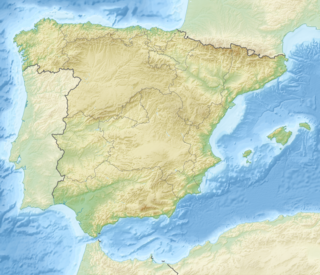 W
WThe Arén Formation or Arén Sandstone is a geological formation in the Tremp-Graus Basin around Arén, Catalonia, Spain whose strata date back to the Late Cretaceous. Dinosaur remains are among the fossils that have been recovered from the formation. The formation dates to the Campanian to Maastrichtian and underlies the Tremp Group.
 W
WThe Asencio Formation is a geological formation in the Paraná Basin of southwestern Uruguay whose strata date back to the Late Cretaceous (Campanian-Maastrichtian). Dinosaur remains are among the fossils that have been recovered from the formation.
 W
WThe Bayan Shireh Formation is a geological formation in Mongolia, that dates to the Late Cretaceous period. It was first described and established by Vasiliev et al. 1959.
 W
WThe Blackleaf Formation is a geologic formation in Montana. It preserves fossils dating back to the Albian to Cenomanian stages of the Cretaceous period.
 W
WThe Blesa Formation is a geological formation in Teruel and La Rioja, Spain whose strata date back to the Barremian of the Early Cretaceous. Dinosaur remains as well as eggs are among the fossils that have been recovered from the formation. Along with the fragmentary anhanguerian pterosaur Iberodactylus. While the lower and upper parts of the formation were deposited in a continental setting, the middle portion of the formation is largely nearshore marine, with remains of plesiosaurs.
 W
WThe Cerro del Pueblo Formation is a geological formation in Coahuila, Mexico whose strata date back to the Late Cretaceous. Dinosaur remains are among the fossils that have been recovered from the formation. The formation has been dated to between 72.5 Ma and 71.4 million years old.
 W
WThe Colorado Formation is a Late Cretaceous (Campanian to Maastrichtian geologic formation that is exposed within the Colorado Basin in the southeastern part of La Pampa Province, Argentina. Fossil dinosaur eggs of Sphaerovum erbeni have been reported from the nonmarine, fluvial strata of this formation.
 W
WThe DeBeque Formation is a geologic formation in Colorado's Piceance Basin, preserving fossils which date back to the Late Paleocene to Early Eocene period (Clarkforkian to Wasatchian in the NALMA classification. Examples of these fossils are held in the University of Colorado Museum of Natural History.
 W
WThe Dinosaur Park Formation is the uppermost member of the Belly River Group, a major geologic unit in southern Alberta. It was deposited during the Campanian stage of the Late Cretaceous, between about 76.9 and 75.8 million years ago. It was deposited in alluvial and coastal plain environments, and it is bounded by the nonmarine Oldman Formation below it and the marine Bearpaw Formation above it.
 W
WThe Dushihin Formation is an Early Cretaceous (Aptian) geologic formation in the Övörkhangai Province of Mongolia. The formation preserves fossils of Psittacosaurus mongoliensis and fossil eggs described as Trachoolithus faticanus.
 W
WThe El Castellar Formation is a geological formation in La Rioja and Teruel, Spain whose strata date back to the possibly the Valanginian to the Barremian stages of the Early Cretaceous. Dinosaur remains are among the fossils that have been recovered from the formation.
 W
WThe El Gallo Formation is a geological formation in Mexico whose strata date back to the Late Cretaceous, Campanian epoch, specifically dated to 75.21 ± 0.07 Ma and 74.55 ± 0.09 Ma. Dinosaur remains are among the fossils that have been recovered from the formation.
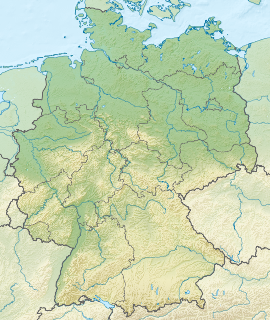 W
WThe Erfurt Formation, also known as the Lower Keuper, is a stratigraphic formation of the Keuper group and the Germanic Trias supergroup. It was deposited during the Ladinian stage of the Triassic period. It lies above the Upper Muschelkalk and below the Middle Keuper.
 W
WThe Fruitland Formation is a geologic formation found in the San Juan Basin in the states of New Mexico and Colorado, in the United States of America. It contains fossils dating it to the Campanian age of the late Cretaceous.
 W
WThe Gaogou Formation is a Late Cretaceous (Cenomanian-Turonian) geologic formation in China. Fossil dinosaur eggs, the caenagnathid Beibeilong, and the titanosaur Baotianmansaurus have been reported from the formation.
 W
WArgiles et Grès à Reptiles Formation, also known as the Argiles Rutilantes Formation is an early Maastrichtian French geologic formation in the département of Var preserving the remains of several types of dinosaurs and other extinct organisms.
 W
WThe Grès d'Alet is a Campanian geologic formation in southern France. Fossil dinosaur eggs have been reported from the formation.
 W
WThe Guichón Formation is a Late Cretaceous geologic formation of the Paysandú Group in Uruguay. Dinosaur remains are among the fossils that have been recovered from the formation.
 W
WThe Hekou Group is a geological group in Gansu Province, China. It is Early Cretaceous in age. Dinosaur body fossils have also been recovered from the Hekou Group, including the iguanodont Lanzhousaurus and the titanosaurs Daxiatitan, Huanghetitan and Yongjinglong, and the nodosaur Taohelong. Fossil eggs are rare, but one oogenus, Polyclonoolithus, was discovered in the Hekou Group. The group spans the Valanginian to Albian and can be subdivided into four formations. Fossil pterosaur tracks have been recovered.
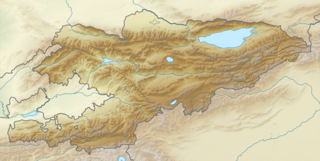 W
WThe Ialovachsk or Yalovach Formation is a Santonian geologic formation in Kyrgyzstan, Tajikistan and Uzbekistan. Fossil dinosaur eggs have been reported from the formation.
 W
WThe Iren Dabasu Formation is a Late Cretaceous (Cenomanian) geologic formation in the Iren Nor region of Inner Mongolia. Dinosaur remains diagnostic to the genus level are among the fossils that have been recovered from the formation. The formation was first described and defined by Henry Fairfield Osborn in 1922 and it is located in the Iren Nor region of China.
 W
WThe Javkhlant Formation is a geological formation in Mongolia whose strata date back to the Late Cretaceous possibly Santonian to Campanian. Ceratopsian, ornithopod and theropod remains been found in the formation. A prominent fossilized therizinosauroid nesting site is also known from the formation.
 W
WThe Kallakurichi Formation, alternatively spelled as Kallankurichchi or Kallankurichi Formation, is a geological formation of the Ariyalur Group in Tamil Nadu, southern India whose strata date back to the Maastrichtian stage of the Late Cretaceous. Dinosaur eggs of Megaloolithus cylindricus are among the fossils that have been recovered from the sandy limestones of the formation.
 W
WThe Kelvin Formation is a geologic formation in Utah. It preserves dinosaur fossil eggs dating back to the Aptian to Albian stages of the Cretaceous period.
 W
WThe Khodzhaosmansk or Khodzhaosman Formation is an Aptian to Albian geologic formation in Kyrgyzstan. Dinosaur remains and fossil dinosaur eggs have been reported from the formation.
 W
WThe Kitadani Formation is a unit of Lower Cretaceous sedimentary rock which crops out near the city of Katsuyama in the Fukui Prefecture of Japan, and it is the primary source of Cretaceous-aged non-marine vertebrate fossils in Japan. Dinosaur remains are among the fossils that have been recovered from the formation, but it also preserves a diverse assemblage of plants, invertebrates, and other vertebrates. Most, if not all, of the fossil specimens collected from the Kitadani Formation are reposited at the Fukui Prefectural Dinosaur Museum.
 W
WThe Laguna del Hunco Formation or Laguna del Hunco Tuff is a localized Early Eocene fossiliferous geological formation of the Cañadón Asfalto Basin in central Patagonia, Argentina. The 170 metres (560 ft) thick formation comprises tuffaceous mudstones and sandstones deposited in a crater lake environment and crops out at Laguna del Hunco in the northwestern Chubut Province.
 W
WThe Laguna Palacios Formation is a Maastrichtian geologic formation of the Chubut Group in the Golfo San Jorge Basin in Patagonia, Argentina. The formation partly overlies and partly is laterally equivalent to the Lago Colhué Huapí Formation and is overlain by the Salamanca Formation of the Río Chico Group. The formation comprises tuff reworked by fluvial activity and paleosols. The Laguna Palacios Formation has provided fossilized bee nests. Dinosaur remains, such as Notoceratops, diagnostic to the genus level are among the fossils that have been recovered from the formation.
 W
WThe Lameta Formation, also known as the Infratrappean Beds is a sedimentary rock formation found in Madhya Pradesh, Gujarat, and Maharashtra, India. It is of Maastrichtian age, and is notable for its dinosaur fossils. Many dubious names have been created for isolated bones, but several genera of dinosaurs from these rocks are well-supported, including the titanosaur sauropod Isisaurus and the abelisaurs Indosaurus, Indosuchus, Laevisuchus, and Rajasaurus. As well as mammals, snakes and other fossils.
 W
WThe Liangtoutang Formation, also referred to as the Laijia Formation is a geological formation located in Zhejiang, China. Its strata date back to the Albian to Cenomanian stages of the Cretaceous period. The lithology primarily consists of red sandstone.
 W
WThe Lopez de Bertodano Formation is a geological formation in the James Ross archipelago of the Antarctic Peninsula. The strata date from the end of the Late Cretaceous to the Danian stage of the lower Paleocene, from about 70 to 65.5 million years ago, straddling the Cretaceous-Paleogene boundary.
 W
WLos Llanos Formation is a geological formation in the in La Rioja Province, northwestern Argentina whose strata date back to the Campanian stage of the Late Cretaceous.
 W
WThe Majiacun Formation is a Santonian to Coniacian geologic formation in China. Dinosaur remains are among the fossils that have been recovered from the formation.
 W
WThe Mangrullo Formation is an Early Permian (Artinskian) fossiliferous geological formation in northeastern Uruguay. Some authors alternatively group it together with the Paso Aguiar Formation and the Fraile Muerto Formation as the three subdivisions of the Melo Formation, in which case it is referred to as the Mangrullo Member. Like the correlated formations of Irati and Whitehill, it is known for its abundant mesosaur fossils. It also contains the oldest known Konservat-Lagerstätte in South America, as well as the oldest known fossils of amniote embryos.
 W
WThe Manrak Formation is a Campanian geologic formation in Kazakhstan. Fossil dinosaur eggs have been reported from the formation.
 W
WThe Marnes Rouges Inferieures Formation is a Late Cretaceous geologic formation found in the French Pyrenees. It predominantly consists of red mustone, with minor brown mudstone and sandstone. Dinosaurs, dinosaur eggs and avialian stem-birds have been reported from the formation.
 W
WThe Mercedes Formation is a Late Cretaceous geologic formation of the Norte Basin in Uruguay. Fossil dinosaur eggs have been reported from the formation. The formation that reaches a thickness of about 100 metres (330 ft), overlies the Guichón Formation and is overlain by the Asencio Formation.
 W
WThe Nanxiong Formation is a Late Cretaceous geologic formation in Guangdong Province. Dinosaur remains are among the fossils that have been recovered from the formation. It consists of continental siliciclastic red beds, with fauna which similar to that of the Nemegt Formation. It has been dated about 66.7 ± 0.3 million years ago. It is the lowest unit of the Nanxiong Basin, a small graben created during Mesozoic rifting. Buck et al. state that it overlies Jurassic granite basement, and is conformably overlain by the Shanghu Formation. Alternative stratigraphic schemes for the Nanxiong basin have been proposed, one of which refers to the Nanxiong succession as the Nanxiong Group, and dividing it into the Yuanfu, Zhutian and Zhenshui formations, and overlying the Albian to Turonian Changba Formation.
 W
WThe Nichkesaisk or Nichkesai Formation is an early Campanian geologic formation in Kyrgyzstan. Fossil dinosaur eggs have been reported from the formation.
 W
WThe North Horn Formation is a widespread non-marine sedimentary unit with extensive outcrops exposed in central and eastern Utah. The formation locally exceeds 3,600 feet (1,100 m) in thickness and is characterized by fluvial, lacustrine, and floodplain dominated systems, representing a terrestrial, high energy, depositional environment. The sediments date from Late Cretaceous (Maastrichtian) to early Paleocene in age and include the K-Pg extinction event boundary; however, this boundary is extremely difficult to locate and there is no strong stratigraphic evidence available that indicates a specific marker bed such as an iridium rich clay layer. Thus far, the only visible evidence is represented in the form of faunal turnover from dinosaur to mammal-dominated fossil assemblages. Taxa from the Cretaceous part of the formation include squamates, testudines, choristoderes, crocodyliforms, sharks, bony fishes, amphibians, mammals, dinosaurs, eggshell fragments, trace fossils, mollusks, plant macrofossils, such as wood fragments, and palynomorphs.
 W
WThe Oldman Formation is a stratigraphic unit of Late Cretaceous age that underlies much of southern Alberta, Canada. It consists primarily of sandstones that were deposited in fluvial channel and floodplain environments. It was named for exposures along the Oldman River between its confluence with the St. Mary River and the city of Lethbridge, and it is known primarily for its dinosaur remains and other fossils.
 W
WThe Puerto Yeruá Formation is a Late Cretaceous geologic formation in the Paraná Basin, pertaining to Entre Ríos Province, Argentina. Dinosaur remains are among the fossils that have been recovered from the formation, as well as egg fragments and fossilized wood.
 W
WThe Qiupa Formation is a Late Cretaceous Maastrichtian geologic formation in Henan Province, central China. It is rich in dinosaur eggs and bones, such as those of carnivorous and herbivorous dinosaurs. The Qiupa Formation is considered to be Late Maastrichtian in age, about 72 million and 66 million years ago.
 W
WThe Quxian Formation is a Santonian to Campanian geologic formation in China. Fossil dinosaur eggs have been reported from the formation. It is a unit of the Qujiang Group and dates to the Santonian through early Campanian.
 W
WThe Sânpetru Formation is a early Maastrichtian geologic formation. Dinosaur remains are among the fossils that have been recovered from the formation. It is located in Romania, near Sânpetru village, part of Sântămăria-Orlea commune. It forms a component of the Hațeg Island fauna.
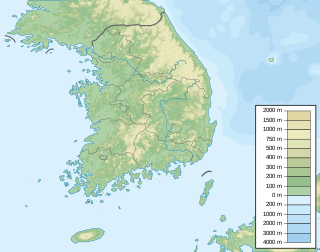 W
WThe Seonso Conglomerate is a Mesozoic geologic formation in South Korea. Fossil of Asprosaurus, Koreanosaurus and some dinosaur eggs have been reported from the formation.
 W
WThe Subashi Formation is a Late Cretaceous formation from the Xinjiang Autonomous Region of western China. Initially described by Dong Zhiming in 1977, the formation contains remains of Tarbosaurus which were initially described as a separate taxon Shanshanosaurus huoyanshanensis. Remains of a sauropod, likely Nemegtosaurus, and a hadrosaurid, likely Jaxartosaurus, have also been found.
 W
WThe Thomas Fork Formation is an Early Cretaceous (Albian) geologic formation in Wyoming. Fossil dinosaur eggs have been reported from the formation.
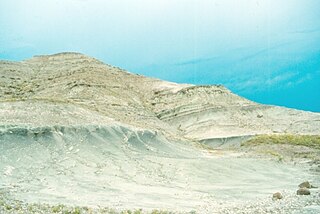 W
WThe Two Medicine Formation is a geologic formation, or rock body, that was deposited between 83.5 ± 0.7 Ma and 70.6 ± 3.4 Ma, during Campanian time, and is located in northwestern Montana and southern Alberta. It crops out to the east of the Rocky Mountain Overthrust Belt, and the western portion of this formation is folded and faulted while the eastern part, which thins out into the Sweetgrass Arch, is mostly undeformed plains. Below the formation are the nearshore deposits of the Virgelle Sandstone, and above it is the marine Bearpaw Shale. Throughout the Campanian, the Two Medicine Fm. was deposited between the western shoreline of the Late Cretaceous Interior Seaway and the eastward advancing margin of the Cordilleran Overthrust Belt. The Two Medicine Fm. is mostly sandstone, deposited by rivers and deltas.
 W
WThe Ulaanoosh Formation, formerly Baruunbayan Formation, is a geologic formation in the Ömnögovi Province of southern Mongolia. The formation dates to the Albian to Cenomanian stages of the Cretaceous. The Ulaanoosh Formation has provided fossils of dinosaurs, turtles and dinosaur eggs assigned to Parafaveoloolithus sp.. In 2020, the neoceratopsian Beg tse was described from the alluvial sandstones, mudstones and conglomerates of the formation.
 W
WThe Villalba de la Sierra Formation is a Campanian to Maastrichtian geologic formation in Spain. Fossil dinosaur eggs have been reported from the formation, that comprises gypsiferous, grey, argillaceous mudstones and sandstones, deposited in a floodplain environment. Abundant titanosaurian remains, including Lohuecotitan were found in the formation. More than 10,000 fossil remains of various fishes, amphibians, lizards, dinosaurs, turtles, and crocodiles are also known from the site, one of the richest for the Late Cretaceous in Europe.
 W
WThe Wangshi Group is a geological Group in Shandong, China whose strata date back to the Coniacian to Campanian stages of the Late Cretaceous. Dinosaur remains are among the fossils that have been recovered from the group.
 W
WThe Wayan Formation is a geological formation in Idaho whose strata date back to the latest Early Cretaceous and the earliest Late Cretaceous. Dinosaur, other reptile, mammal, and micro and macro-floral remains are among the fossils that have been recovered from the formation. The lack of extensive outcrops, limited geographic extent, and extreme structural deformation have limited paleontological explorations of the Wayan.
 W
WThe Willow Creek Formation is a stratigraphic unit of Late Cretaceous to Early Paleocene age in the Western Canada Sedimentary Basin of southwestern Alberta. It was first described by George Mercer Dawson in 1883 along the Willow Creek, a tributary of the Oldman River. Williams and Dyer defined the type section in 1930 at the mouth of Willow Creek, east of Fort Macleod.
 W
WThe Xiaguan Formation is a Turonian to Campanian geologic formation in Henan Province of China. Dinosaur remains are among the fossils that have been recovered from the formation.
 W
WThe Yixian Formation is a geological formation in Jinzhou, Liaoning, People's Republic of China, that spans 11 million years during the early Cretaceous period. It is known for its exquisitely preserved fossils, and is mainly composed of basalts interspersed with siliciclastic sediments.
 W
WThe Zhaoying Formation is a Coniacian geologic formation in Henan Province, China. Fossil dinosaur eggs of Ovaloolithus sp. have been reported from the formation.